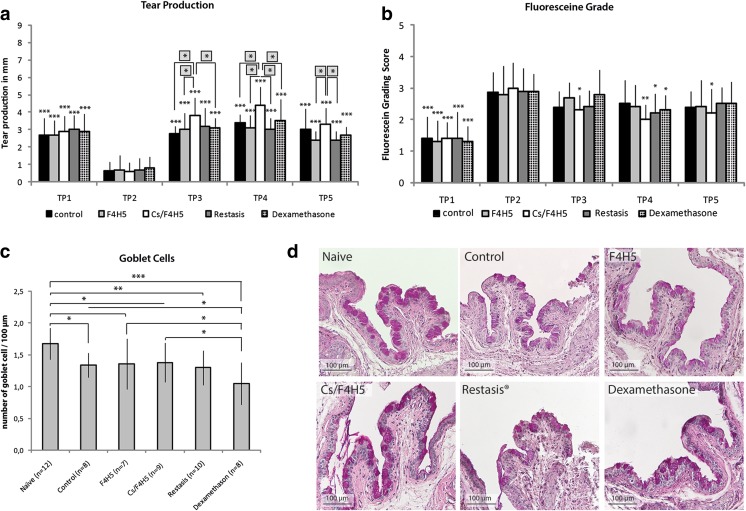Fig. 3.
Tear production, fluoresceine staining, and goblet cell density under late therapy regimen before (TP1: baseline), during EDE (TP2) and a following topical treatment (TP3–TP5) of EDE: a Tear production: data represent the tear production in mm of each group as mean ± SD (n = 10 eyes/group). Late therapy with Cs/F4H5 led to a higher increase of tear production compared between groups at every time point. A comparative group analysis comparing the differences between groups was performed at every evaluation time point (asterisks in grey squares placed above). b Fluoresceine staining: data are representing the fluoresceine staining score each group as mean ± SD (n = 10 eyes/group) Late therapeutic treatment with Cs/F4H5 led to a significant earlier improvement of epithelial staining at TP3. c Goblet cell density: all groups showed decreased GC density compared to naïve mice. Treatment with dexamethasone resulted in a lower number of GC compared to F4H5, Cs/F4H5, and control group (mean ± SD, n = number of investigated eyes). P-values ≤ 0.05 were considered to be significant (* p ≤ 0.05, ** p ≤ 0.001, *** p ≤ 0.0001). Significances refer to TP2 (a + b). d Representative images of conjunctival goblet cell distribution (PAS-staining) in all treatment groups at TP5. All treatment groups demonstrated reduced goblet cells in comparison to the naïve untreated control

